The Software Engineering Master Resume Guide That Will Get You Noticed in Landing a job
Are you looking for the best , attractive and unique Resumes ?
Your search ends here.
In this page, you’ll discover the top results and ideas to follow in 2023.
In this blog post, we'll explore over 20 infographic resume templates, along with practical design tips to help you create a visually stunning and impactful resume that will make a lasting impression on potential employers.
""
>
Crafting a compelling software engineering resume can seem daunting, but with the right guidance, you can create a document that effectively showcases your skills, experience, and passion for the field. Here's a comprehensive guide to help you craft a resume that will make a lasting impression on potential employers.
First Impressions Matter
Your resume is often the first impression you make on a potential employer, so it's crucial to make it count. Aim for a clean, easy-to-read format that highlights your most relevant qualifications.
-
Formatting for Readability: Keep your resume to a single page unless you have extensive experience. Use a standard font like Times New Roman, Arial, or Calibri in a readable size (10pt or larger). Maintain consistent margins (0.5-1 inch). Avoid using fancy templates or excessive colors; let your accomplishments stand out.
-
Chronological or Functional Format: Choose a chronological format if your career trajectory has been consistent. If you're transitioning from a different field, a functional format might be more suitable.
Highlighting Your Experience
Your work experience section should be the most prominent part of your resume. Use strong action verbs and quantifiable achievements to demonstrate your impact in previous roles.
-
Brain-Dump and Tailor: Jot down all your accomplishments and tailor them to each job application.
-
Quality over Quantity: Focus on 3-5 of your most impressive achievements.
-
Action Verbs and Hard Numbers: Use Laszlo Bock's formula: "Accomplished [X] as measured by [Y] by doing [Z]."
-
"Some people say that objectives are no longer necessary in a resume — at best, they are unnecessary, and at worst, they are outdated," says Alison Doyle to The Balance Careers. We agree: They're an outdated concept. The vast majority of personal objectives are seen as bland, generic, and a waste of space. They may not fall into the category of “bad” — but according to a study that asked more than 70 employers what they thought, resume objectives are now seen as a total waste of space.
Showcasing Your Passion with Projects
The "Projects" section is a great opportunity to showcase your passion for software engineering. Include personal projects, apps, or websites that demonstrate your creativity and problem-solving skills.
-
Quantity and Variety: Include a variety of projects, even if they're not polished.
-
Focus on Highlights: Don't worry about excessive details; emphasize the project's impact.
-
Build Something Now: If you lack projects, start building something now. Even a small project can make a difference.
-
Stretch Assignments and School Projects: Include relevant stretch assignments or school projects that showcase your initiative.
Education and Skills
While education is important, prioritize your experience section. Briefly mention your academic background and include relevant coursework if you're a fresh graduate.
-
GPA: GPA requirements vary, so only include it if the job posting requires it or if it's above 3.2 for fresh graduates.
-
Skills: List your technical competencies, aligning them with your projects and experience. Use keywords from the job posting to improve searchability.
-
Soft Skills: Soft skills are valuable, but be selective and only include those that are truly relevant and measurable.
-
Enhance a classic resume template by incorporating understated visual elements:
- Avoid using too many colors, as this can make your resume look cluttered and unprofessional.
- Instead, choose a few complementary colors that will make your resume stand out.
- For example, you could use a dark blue for your header and footer, a lighter blue for your body text, and a pop of orange or yellow for your accents.
Incorporate subtle graphic elements to break up text and add visual interest.
- You can use simple shapes like circles, squares, and triangles to create dividers between sections of your resume.
- You can also use icons to represent your skills and experience.
- Just be sure to use these elements sparingly, as you don't want to overwhelm your reader with too much visual information.
Use a different font for your headings to make them stand out.
- This will help to make your resume more scannable and easier to read.
- You can also use a larger font size for your headings to make them even more prominent.
Use a subtle border or shadow effect around your resume to give it a polished look.
- This will help to make your resume appear more finished and professional.
Use a high-quality headshot for your profile picture.
- This will help to make you appear more approachable and professional.
- Be sure to choose a headshot that is well-lit and cropped to your face and shoulders.
Keep your resume clean and uncluttered.
- Use white space to your advantage and avoid using too many fonts or colors.
- Your resume should be easy to read and visually appealing, but it should also be professional and polished.
Here are some additional tips for using visuals to enhance your resume:
- Use visuals that are relevant to your experience and skills.
- Make sure your visuals are high-quality and free of any errors.
- Use visuals sparingly so that they don't overwhelm your reader.
- Use visuals to complement your written content, not to replace it.
By following these tips, you can create a visually appealing resume that will help you make a lasting impression on potential employers.
-
Use a color palette that is both professional and visually appealing.
-
Present your interests and skills in graphical formats such as
charts for better visualization:
Interests
-
Reading: I love to read fiction, non-fiction, and everything in between. I find it to be a great way to learn about new things and escape into different worlds.
-
Writing: Writing is a passion of mine. I enjoy using my words to create stories, poems, and essays. I also enjoy writing code and scripts.
-
Coding: I'm always interested in learning new programming languages and technologies. I find it to be a challenging and rewarding hobby.
-
Gaming: I'm a big fan of video games. I enjoy playing a variety of genres, including RPGs, FPS, and puzzle games.
-
Travel: I love to travel and experience new cultures. I've been to many different countries and I'm always looking for new places to explore.
-
Art: I'm interested in all forms of art, including painting, sculpture, and music. I enjoy creating my own art and I also appreciate the work of others.
Skills
-
Programming: I'm proficient in a variety of programming languages, including Python, Java, and C++. I'm also familiar with a number of web development frameworks, such as Django and React.
-
Natural Language Processing: I'm interested in the field of natural language processing (NLP). I'm currently learning how to use NLP techniques to develop chatbots and other language-based applications.
-
Machine Learning: I'm also interested in machine learning (ML). I'm currently learning how to use ML techniques to solve complex problems, such as image recognition and sentiment analysis.
-
Data Analysis: I'm skilled in data analysis. I can use data analysis techniques to extract meaningful insights from large datasets.
-
Communication: I'm an effective communicator. I can clearly and concisely communicate my ideas to both technical and non-technical audiences.
-
Problem-Solving: I'm a skilled problem solver. I can identify and solve complex problems in a timely and efficient manner.
-
Creativity: I'm a creative thinker. I can come up with new and innovative ideas to solve problems.
-
Adaptability: I'm adaptable. I can quickly learn new things and adjust to new situations.
-
Teamwork: I'm a team player. I work well with others to achieve common goals.
-
- Use a mind map to highlight your most positive characteristics
- Use a header image that relates to your personal goals or your industry
- Don’t be afraid to add a bit of color to your resume
- Use a creative font for your infographic resume header that reflects your personal brand
- Use a timeline resume to show your career progress and achievements
-
Use a monochrome color palette for a sleek, professional
infographic resume
- Use a bold background color in your graphic resume design
- Pick a brightly contrasting color for your infographic resume header
- Emphasize important information with icons
- To set yourself apart, use an unconventional graphic resume layout
- Make typography the central design element of your graphic resume
- Highlight numbers on your infographic resume that back up your achievements
-
Create a logo for your personal brand
- Divide your graphic resume into two columns for an unconventional layout
- Use a muted color scheme for a modern resume design
- Include a section that highlights your core qualifications
- Make a statement by using bold colors on your resume and a dark background color
-
Final Touches and Submission
Before submitting your resume, proofread carefully, have someone else review it, and take a break to see it with fresh eyes.
-
Read Aloud and Ask for Feedback: Read your resume aloud to catch any awkward phrasing. Ask a friend or family member to review it for errors.
-
Submit with Confidence: Once you're satisfied, submit your resume with confidence. You've put in the effort to create a compelling document that highlights your qualifications.
Remember, your resume is a dynamic tool that should evolve as you gain new experiences and skills.
Keep it updated regularly and tailor it to each job application to increase your chances of success.
 Reviewed by Chaitanya Chaithu
on
Tuesday, November 21, 2023
Rating:
Reviewed by Chaitanya Chaithu
on
Tuesday, November 21, 2023
Rating:

.png)

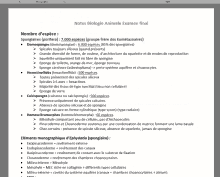

/Hiring%20Project%20Based%20Creative%20Talent.jpg?width=720&name=Hiring%20Project%20Based%20Creative%20Talent.jpg)
/LinkedIn%20Computer.jpg?width=720&name=LinkedIn%20Computer.jpg)
/Employee%20Onboarding.jpg?width=720&name=Employee%20Onboarding.jpg)

/Dream_Job2.jpg?width=720&name=Dream_Job2.jpg)

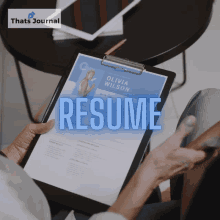
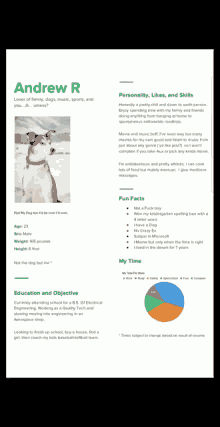
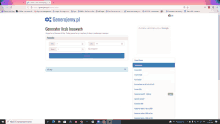









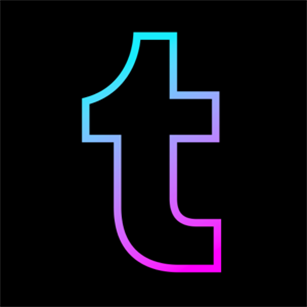
.png)

No comments